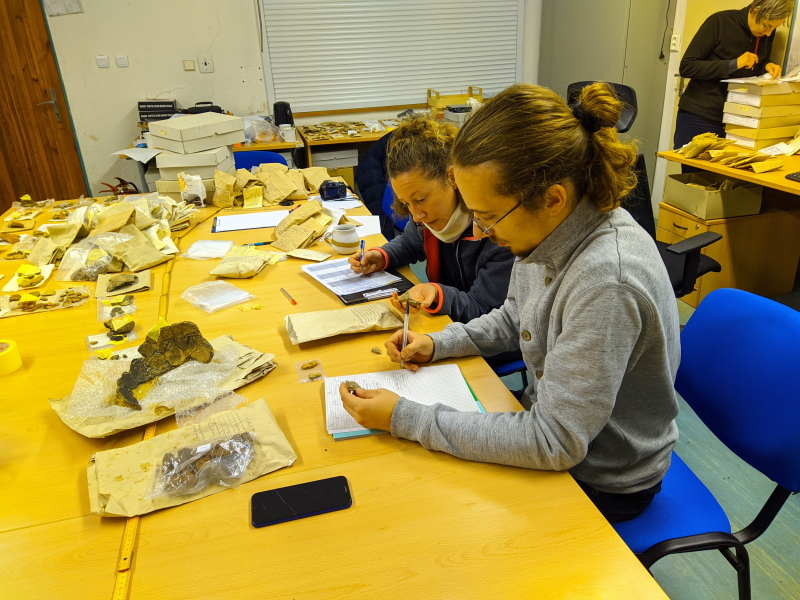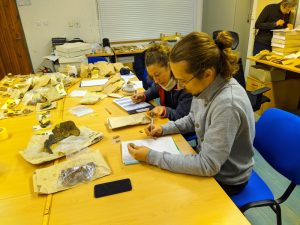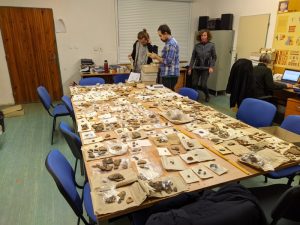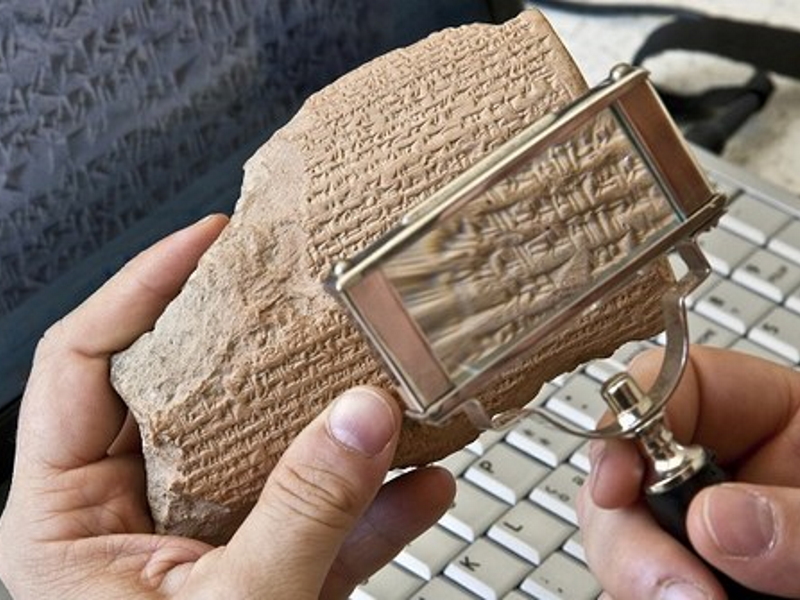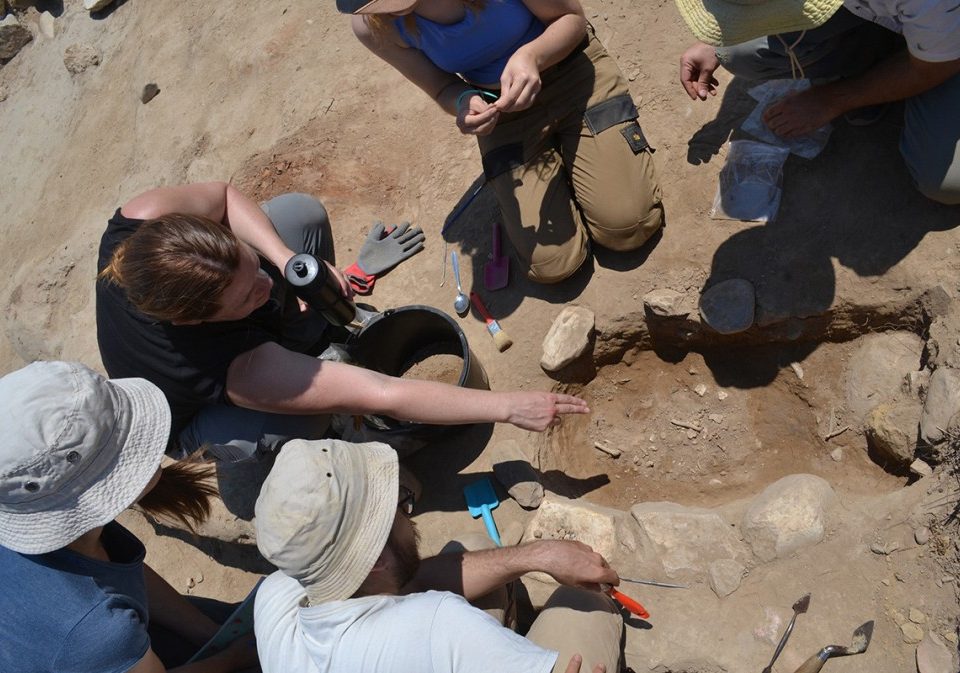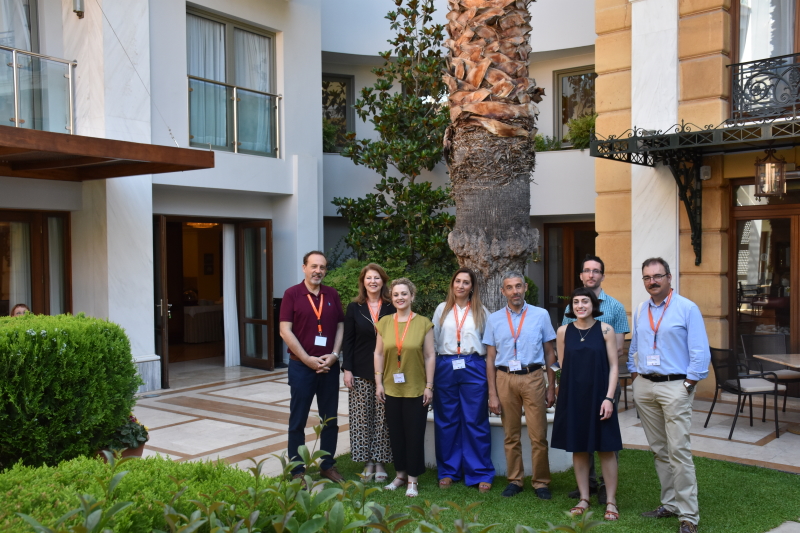How was the pit filled? How long did it take? What is the relation between the pit filling and archaeological material deposited in it? These are examples of research questions we were dealing with during a workshop, which took place on November 25-26, 2021, at the archaeological research base of Masaryk University in Těšetice (Czech Republic). Understanding the formation processes of archaeological features is essential for archaeology. This topic is of utmost importance, especially for Neolithic research, to understand the life of the first farming communities since researchers argue about the extent to which the waste reflects the activities of a particular household.
One way to study the formation processes of the pits surrounding a Neolithic longhouse is through pottery material and lithics. Following the TSAR method, we examined the relations of artefacts between each other and among different pits looking for connections (pieces able to be “glued” together) and similarities (pieces from one vessel or tool but not able to put them together). In connection with stratigraphical information, such as the depth and position of the artefacts, we are reconstructing the mechanisms that led to the deposition of archaeological material. Preliminary results suggest that deposition of artefacts within pits was not random. After thorough analysis and synthesis, the results will be published in a series of publications. Stay tuned.

